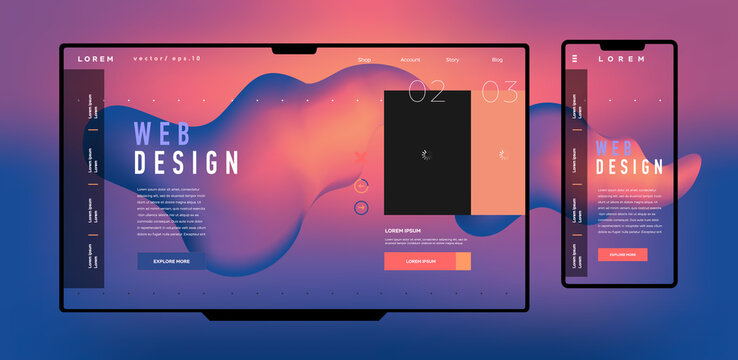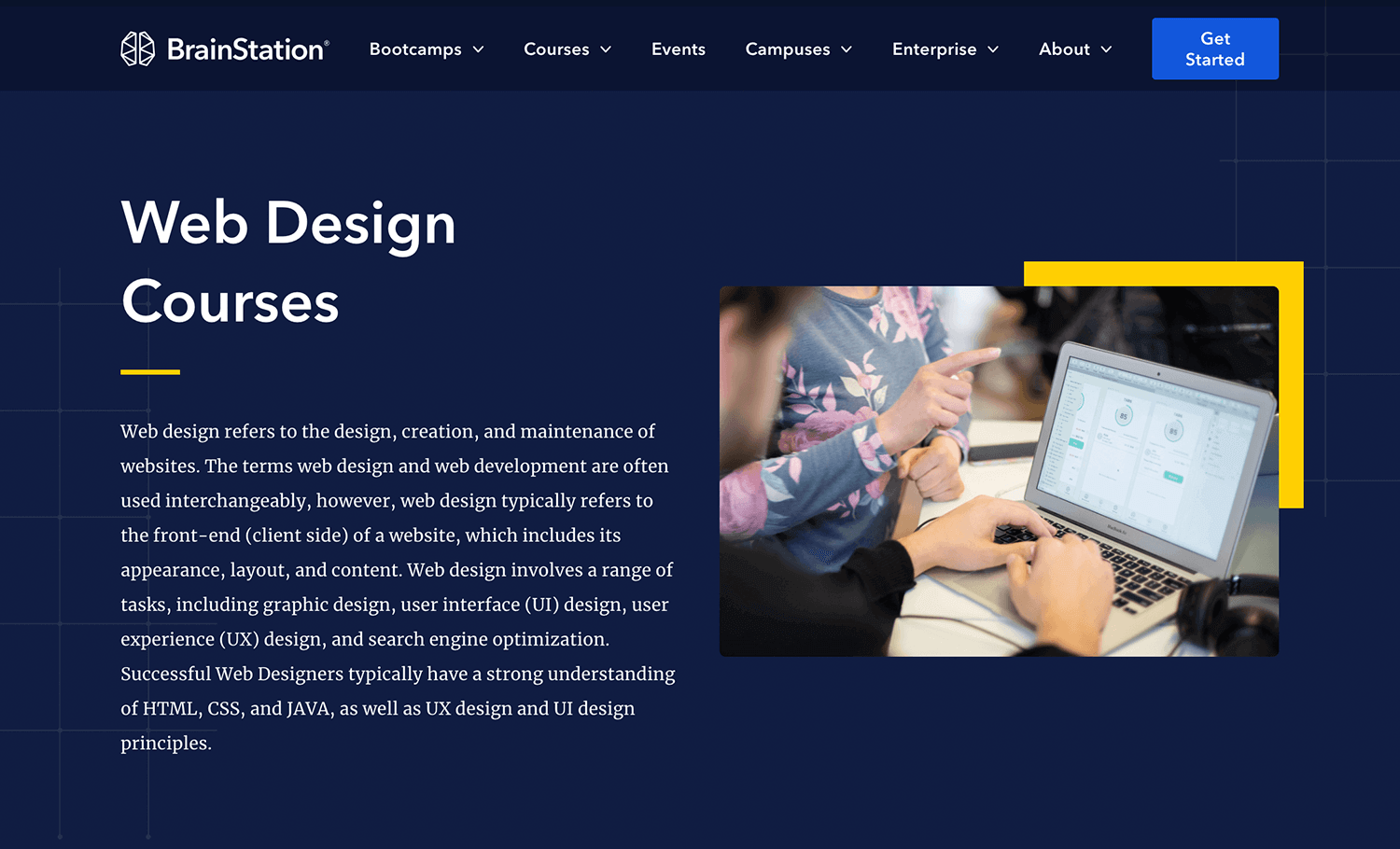Maximize User Experience With Ingenious Web Site Layout Solutions
In today's electronic landscape, maximizing user experience through innovative site layout remedies is critical for companies seeking to engage their audience successfully. By embracing user-centric style principles, companies can create interfaces that not only satisfy user demands but also boost total fulfillment. Secret factors such as responsive formats, instinctive navigating, and reliable visual hierarchy play a crucial function in this process. Nevertheless, the combination of interactive aspects can additionally boost the user trip, motivating a reevaluation of standard layout methods. When we think about the advancing expectations of customers?, what methods might arise.
Understanding User-Centric Design

To carry out user-centric layout effectively, it is important to conduct comprehensive research, including customer interviews, surveys, and use screening. These research methods provide useful data that educates layout choices, making sure that the end product lines up with individual assumptions. Additionally, developing customer personas can help developers empathize and envision with the end-users, directing the design procedure toward much more pertinent remedies.
Moreover, repetitive layout is a crucial part of user-centric methodologies. By constantly testing and refining styles based on customer responses, developers can determine pain factors and areas of enhancement, resulting in a more sleek end product. Inevitably, user-centric layout is not merely a phase in the development procedure but a constant commitment to prioritizing user needs, causing more efficient and engaging electronic experiences.
Importance of Responsive Layouts
As electronic communications significantly take place across a selection of devices, the importance of receptive designs can not be overemphasized. A responsive design ensures that a website adapts flawlessly to various screen dimensions, from desktop computer monitors to mobile phones. This adaptability is important in today's multi-device landscape, where individuals anticipate a constant and engaging experience no matter of how they access material.
The primary advantage of receptive layout is improved customer contentment. When an internet site is maximized for all gadgets, it reduces the demand for zooming, scrolling, or horizontal navigating, which can frustrate users and lead to higher bounce rates. In addition, internet search engine like Google focus on mobile-friendly sites in their ranking formulas, making responsive designs important for effective search engine optimization techniques.
In addition, receptive formats assist in less complicated upkeep and updates. As opposed to handling different variations of a site for different gadgets, a single, fluid style can be changed, saving time and sources. This all natural technique not only enhances efficiency yet additionally cultivates brand comprehensibility throughout systems. Ultimately, buying responsive formats is not simply a fad; it is an essential concept of modern website design that significantly improves individual experience and interaction.
Enhancing Navigation and Ease Of Access
Efficient navigation and availability are pivotal elements of a properly designed website, substantially affecting customer involvement and satisfaction. A straightforward navigation structure enables visitors to discover details swiftly and intuitively, lowering frustration and increasing the likelihood of repeat visits. Applying clear, detailed tags for navigating web links, along with a sensible pecking order, can guide individuals seamlessly with the website.
Accessibility is similarly important, ensuring that all customers, despite their capacities or specials needs, can engage with the site efficiently. This can be accomplished via using appropriate shade contrasts, text dimensions, and alt text for images, which together enhance the experience for aesthetically impaired users. In addition, including keyboard navigating and display reader compatibility increases accessibility for individuals with diverse demands.
Routine usability screening can supply valuable insights right into navigating efficiency and availability issues. By gathering feedback from real customers, designers can determine pain points and make educated changes. Eventually, focusing on navigating and accessibility not only fosters inclusivity however also grows a favorable user experience, enhancing the brand's dedication to quality and individual care in an increasingly digital landscape.
Utilizing Visual Power Structure Properly
Visual power structure functions as a leading framework in website layout, routing individuals' interest to the most essential aspects on a page. By purposefully organizing visual elements such as color, typography, and spacing, designers can develop a clear path for individuals to comply with. This structure not only improves user experience but likewise improves material comprehension.
One efficient means to establish aesthetic power structure is with the use of dimension and range. Larger aspects naturally draw in even more attention, making headings and essential visuals famous. Complementing this technique with contrasting shades can better differentiate key web content from second information, guaranteeing that vital info attracts attention.
Additionally, the arrangement of components plays a vital duty in directing individual interaction. Utilizing a grid format can develop a natural circulation, while whitespace aids to separate web content and reduce cognitive load - Website Design. This intentional spacing allows individuals to my explanation process info a lot more easily, bring about boosted interaction
Lastly, using constant layout patterns aids strengthen aesthetic power structure, supplying customers with familiar cues as they navigate the website. By prioritizing these concepts, developers can successfully make the most of individual experience, making certain that visitors can effortlessly locate the details they look for.
Integrating Interactive Components
The incorporation of interactive aspects right into site design can significantly improve user interaction and total experience. Interactive functions such as sliders, polls, and quizzes not just captivate users yet likewise advertise active involvement, making the surfing experience a lot more memorable. By motivating individuals to connect, internet sites can successfully preserve interest and decrease bounce rates.
Furthermore, integrating dynamic material like animations and float impacts adds an appealing layer of interactivity. These elements can lead users read more without effort with the site, highlighting essential details and contacts us to action. For example, animated switches can attract interest and boost click-through rates.
Furthermore, personalization with interactive tools such as chatbots or referral engines allows internet sites to deal with individual choices, fostering a sense of link. This tailored method not just improves customer complete satisfaction however also encourages repeat visits.
Integrating analytics tools to track communications gives valuable insights right into individual habits, making it possible for constant renovation of the interactive elements. Eventually, a properly designed interactive experience transforms a passive surfing session into an interesting journey, bring about enhanced customer fulfillment and commitment. Consequently, integrating interactive components is vital for taking full advantage of useful reference individual experience in contemporary web site style.
Conclusion

In today's digital landscape, making the most of user experience with innovative web site layout options is vital for businesses seeking to engage their audience efficiently. Inevitably, prioritizing navigation and accessibility not only cultivates inclusivity however also cultivates a positive individual experience, strengthening the brand name's dedication to top quality and user treatment in an increasingly electronic landscape.

In conclusion, optimizing user experience with ingenious site style solutions requires a dedication to user-centric principles. Website Design.